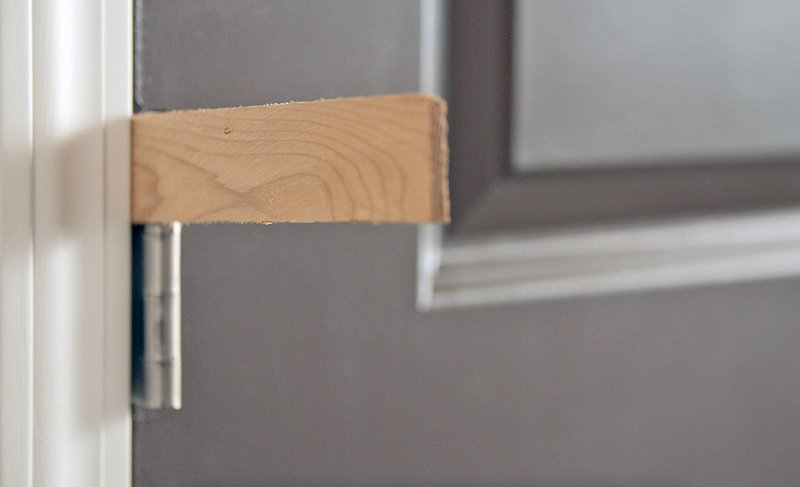
Here’s the thing—*preventing* hinges from freezing isn’t rocket science, but there’s a bit more to it than spraying on some WD-40. Different hinge materials, door brands, and even the climate in your area play a role. Whether you use a Kwikset smart lock or a classic Schlage handle, knowing how to safeguard your hinges is as important as the code you use to get in. Let me explain what works, what doesn’t, and how to keep your entryways moving all winter long.
Why Do Door Hinges Freeze in Winter?
It might seem like doors freeze shut because of the cold air alone, but there’s more to it. Exterior door hinges—those metal connectors holding your door in place—are exposed to a mix of moisture, fluctuating temperatures, and sometimes salt if you’re near a sidewalk. When water sneaks into the creases of your hinges and the temperature drops, it turns to ice, expanding just enough to jam them tight.
If your door is in a drafty entryway or prone to condensation, the risk is even higher. Homes with less insulation or older doors, like some steel or aluminum options, are especially guilty. Even the fanciest locking system or remote-controlled deadbolt can’t override a hinge frozen by a stubborn ice patch.
Honestly, some folks don’t realize how much trouble can start with just a little moisture. Imagine running out the door with arms full of groceries just to find yourself stuck outside, cursing at a hinge that won’t budge. That’s why taking a few simple steps now can save you a heap of frustration later.
Use the Right Lubricant for Cold Weather
One of the easiest ways to prevent exterior door hinges from freezing shut is to keep them well-lubricated—but not just with any old stuff in the garage. Some lubricants work wonders in summer but turn sticky or thick in the cold, making things worse.
The best choice? Silicone-based sprays or graphite powder. Both resist water, don’t freeze easily, and won’t attract as much grit as oil-based options. Here’s how you do it:
- Wipe down your hinges with a dry cloth—get rid of any dust or grime.
- Spray or dust on a thin layer of your chosen lubricant, making sure you hit every crevice.
- Open and close the door a few times to work the lubricant in.
- Wipe away any drips or excess so it doesn’t collect dirt later.
You might be wondering about WD-40. It’s okay for a pinch, but honestly, it’s not the best for lasting freeze protection. Think of it as a quick fix, not a season-long solution.
Keep Moisture Away from Hinges
Even the best lubricant won’t help if water keeps finding its way onto your hinges. Moisture is the real villain here. The trick is to make your door area as dry as possible, especially before a big temperature drop.
If your door faces rain or snow, check the weather stripping and sweeps at the bottom. Cracked or worn strips let water collect and drip right onto the hinges. Swapping them out is usually quick, inexpensive, and makes a surprising difference.
Also, clear away snow or ice buildup near the base of your door. When it melts, that water seeps into all the wrong places—hinges, latches, and even your lock code pads if you have a modern system. If your hinge is already wet and freezing is coming, use a towel or even a hair dryer on low to get everything bone-dry first.
Pro tip: If you have a storm door, keep a boot tray or mat under it to catch melting snow and keep hinge areas drier.
Install a Door Canopy or Awning
Here’s a long-term fix a lot of homeowners overlook: adding a small awning or canopy above your door. It’s one of those simple upgrades that pays off every winter. Why? Because it blocks most rain and snow from ever reaching your hinges.
A canopy doesn’t need to be elaborate or expensive. Even a clear plastic visor or a fabric awning can make a huge difference on those icy mornings. Besides stopping water from dripping down on your hardware, it also keeps snow from piling up right at the entrance.
I’ve seen folks get creative—everything from permanent polycarbonate covers to seasonal fabric shades from big box stores like Home Depot. If your home has a smart lock or a keypad remote system, a canopy even helps protect the electronics from ice and keeps touchpads more responsive.
You might wonder if installing a canopy is overkill. But compared to the cost (or frustration) of prying open a stuck door or replacing corroded hinges, it’s a smart little investment for peace of mind.
Upgrade to Weather-Resistant Hinges
If you’re replacing door hardware or building new, choosing the right kind of hinge matters more than you’d think. Not all exterior door hinges are created equal—some metals handle winter way better than others.
Look for stainless steel, brass, or zinc-coated hinges. These materials naturally resist rust, which also helps them shed water and ice faster. Cheaper steel or uncoated iron hinges can corrode over time, trapping moisture and encouraging ice to build up inside the moving parts.
Brands like Schlage and Kwikset often offer weather-resistant models, and if you’re already upgrading your entry hardware or smart lock, it makes sense to match the hinges as well. Swapping out old hinges for new ones is usually a 30-minute DIY job with a good screwdriver. Just remember to double-check the size so your door fits right when you’re done.
In short, investing in the right hinges upfront means less maintenance—and way fewer frozen mornings—down the line.
Seasonal Maintenance: Cleaning and Checkups
Here’s the thing—preventing frozen hinges isn’t a once-and-done task. Even the best setups need a seasonal check. Before the first frost, make a point to clean, lubricate, and check all your exterior door hardware.
- Remove gunk, salt, or grime from around the hinge area.
- Test your door: does it swing easily? Any squeaks or stickiness? That could signal build-up or beginning rust.
- Reapply lubricant if it’s been washed away by rain or melting snow.
- Inspect weather stripping and replace if it’s cracked or missing.
If you’ve got kids or anyone in the house who’s rough on doors, check hinges more often—slamming can bend them out of shape and make freezing worse. And if you’re using a remote or keypad lock, take a moment to check the battery too. Cold weather can drain them faster, and a dead battery plus a frozen hinge is a recipe for a real headache.
Insight: A little ten-minute maintenance every couple of months is much easier than wrestling with a crowbar on a January morning.
Alternative Fixes If Hinges Freeze Anyway
Despite your best efforts, sometimes a freak ice storm or a surprise temperature swing freezes your hinges anyway. Not all is lost! There are a few safe ways to get things moving again:
- Use a hair dryer or heat gun on a low setting. Gently warm the hinge—not the paint or plastic door parts!—until the ice melts.
- Apply a safe de-icer spray, like the kind used for car locks. Avoid salt or chemical de-icers that can damage metal or finishes.
- Move the door gently. Forcing it can bend the hardware or mess up your remote-controlled locks and codes.
- Once open, dry the hinge thoroughly and reapply lubricant so it doesn’t freeze again.
If your hinges are constantly freezing despite all this, it might be time to call in a pro. They can check for hidden leaks, insulation gaps, or recommend a better hardware solution.
Comparing Common Prevention Methods
You might be wondering if there’s a “best” way to stop exterior door hinges from freezing shut. The honest answer? It often takes a mix of strategies. Here’s a quick breakdown:
| Lubricant | Easy, cheap, and fast—works best when reapplied regularly. |
| Weatherproofing | Prevents water from reaching hinges—essential for lasting results. |
| Canopy/Awning | Best for long-term, high-exposure doors—higher upfront cost but less hassle later. |
| Hardware upgrade | Ideal for older homes or if hinges are already rusty—solves the root problem. |
Some folks get by with just a quick lube-and-go routine. Others, especially in super snowy areas or with older hardware, need a combo of canopy, weatherproofing, and upgraded hinges. If you use a smart remote lock or code pad, extra protection is even more important to keep everything working smoothly in the cold.
Protecting Door Hinges Means Fewer Winter Headaches
Keeping exterior door hinges from freezing shut is all about preparation and choosing the right methods for your door and climate. From a quick squirt of silicone spray to investing in a sturdy awning, it doesn’t have to be expensive or complicated. A little regular attention—cleaning, lubricating, and weather-sealing—goes a long way.
If you’ve ever jammed your shoulder against a stuck door or fumbled with a remote that won’t sync on a snowy morning, the value of these small steps becomes crystal clear. Stay ahead of winter, treat your hinges with care, and you’ll spend less time fighting with your doors—and more time enjoying the season from the comfort of your warm, unfrozen home.
